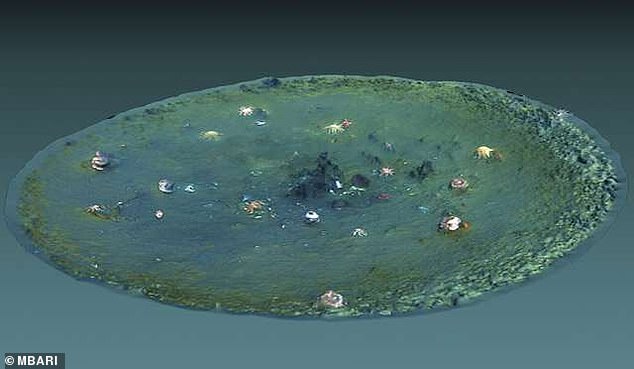
Over 4,000 Bus-Sized Craters Created By Trash Found On The Seafloor Near California
Researchers have found over 4,000 bus-sized craters on the Seafloor in California, which were created by trash dumped by humans.
The discoveries were made during a series of underwater autonomous vehicle surveys in 2018 and 2019.

Eve Lundsten, the lead of the survey, said, “The pockmarks and micro-depressions in this area are both holes in the seafloor that occur in softer sediments, but they are morphologically distinct. The cause and persistence of the pockmarks still remains a mystery, but we find no evidence they were created from gas or fluid in the seafloor in the recent past.”
Eve added, “The micro-depressions are recently formed erosional features; they are not ‘incipient pockmarks. Overall, a lot more work needs to be done to understand how all these features were formed, and this work is in progress.”
The discoveries revealed that marine trash is responsible for the tiny pits that are the size of a bus. The tiny pits, which are also being called as craters, are filled with ropes, nets, plastics, and other garbage.

The craters were spotted by researchers working with the Monterey Bay Aquarium Research Institute in Moss Landing, California.
The researchers initially set out to study the largest pockmark, which is a large crater that stretches 600 feet across and is nearly 16 feet deep, in North America.
In 2017, a separate mapping survey of the seafloor off Big Sur found around 5200 pockmarks in around 500 square miles.
Pockmarks have been found in other locations around the world, and researchers have linked them to the release of methane gas and other fluids that are present on the seafloor.
Gas release makes the seafloor unstable, but the team found out that the crates, which were found recently, were not created by gas venting or gas.

The tiny craters that were found have an average, which is 36 feet across, which is equivalent to the size of a bus. They are also 3 feet deep.
The origin of the larger craters still remain a mystery, but gathering mapping and radiocarbon data indicate that the craters were created around 400,000 years ago.
One thing about the craters is that they were excavated by debris, most of it was garbage lying on the seafloor.
The American Geophysical Union released a statement about the discovery.
The statement said, “About 20% of the surveyed MDs [micro-depressions] contain exotic material including cobbles, kelp holdfasts, and a whale skull.”
The statement added, “Another 30% contain large anthropogenic objects, including filled trash bags, 5-gallon buckets, and a storage trunk, but no objects were observed outside the MDs.”
Researchers believe that the trash could have fallen off from marine boats and even rafted out in kelp holdfasts.
Eve and her colleagues are still in the process of going through their data, which has not yet been published. The researchers are still trying to find answers to some questions that they have.